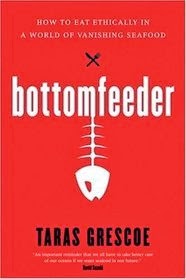We all should include wild foods in our diet. From leafy greens and berries to wild game and mushrooms, wild foods have a lot to offer that cultivated foods do not.
Plants that live in the wild must defend themselves against diseases, insects, animals and UV radiation from the sun. The phytocompounds they need for survival - like antioxidants and bioflavonoids - are nutrients that our bodies need too.
Some constituents, like alkaloids, taste bitter. In our current culture obsessed with all things sweet, bitter foods have fallen out of favor. But many of them are good for us, like baby dandelion leaves that support healthy liver function. (The liver filters out waste products from our blood as well as unnecessary and toxic compounds that we inhale or ingest.)
Common varieties of foods found in stores have not only been selected for sweetness, but also for shelf life. Compared to cultivated foods, their wild counterparts often contain higher amounts of omega-3 fatty acids. These fats are essential to our diet because our bodies cannot make them. Plant sources of omega-3s are fragile, easily oxidized and best picked fresh. (Oxidation turns fats toxic and promotes the production of harmful free radicals.)
Purslane, for example, contains more omega-3 fats than any other green leafy vegetable. This sprawling plant grows close to the ground with succulent reddish stems, green paddle-shaped leaves and tiny yellow flowers. Commonly considered a weed, it is found in lawns and meadows. Purslane's delicious sweet and sour flavor makes a winning contribution to salads, soups and stir fry. And it's easy to forage if you know where to look and how to identify it.
Wild game and fish are also higher in omega-3 fats because they too have foraged for their food and eaten wild plants (or eaten wild animals that have eaten wild plants, in the case of carnivores). In contrast, meat from animals raised in confined animal feeding operations (CAFOs) and fed grain is low in omega-3 fats. Wild animals are also a healthier choice because they haven't been exposed to antibiotics, pesticides or growth hormones common in CAFOs.
But before you forage for your dinner, follow these two important rules:
1. Harvest plants in areas away from traffic that have never treated with chemicals like pesticides or herbicides.
2. Make sure you know what you're picking. If you're not a wild foods expert, find a local guide or join a tour to learn what to look for.
In the New York City area,
"Wildman" Steve Brill offers affordable walking tours in all five boroughs,Westchester, the Appalachians, Long Island, Connecticut and even Pennsylvania. Visit his
website for details.
I joined him on a recent tour of Central Park and below are some of the wild foods I collected. With them, I made a
Central Park Salad for dinner.
Black Cherries
These small fruits are slighty sweet and slightly sour, with a bitter aftertaste.
Black Nightshade Berries
The leaves of this plant are toxic, but the ripe berries are safe to eat. They look like small, smooth blueberries but they taste like tomatoes.
DO NOT EAT THE LEAVES.
 Dogwood Cherries
Dogwood Cherries
These look like cherries but they're really berries. More sour than sweet, they are best eaten when dark red and fully ripe.
May Apples
When these fruits turn yellow and fully ripe, they have a flavor and texture similar to passionfruit.
Lamb's Quarters
These green leaves are tender and can be eaten like spinach: steamed, sautéed or tossed in salads.
Yellow Wood Sorrel
This wild green tastes like lemon and has yellow flowers, heart-shaped leaves and tender stems. Everything can be eaten.
Milk Weed Pods
These pods look like pickles and taste like string beans. Harvest only the small pods, an inch or two in length, and simmer them in boiling water for 20 minutes before adding them to salads or stir fry.
Epazote
These green leaves can be used in small amounts to season foods. They have carminative properties that make them helpful for preventing and treating gas and bloating.
Poor Man’s Pepper
These green seeds taste like pepper and add a mild spice to any dish.
Wild Chervil
These seeds have a sharp flavor reminiscent of parsley.
Wild Field Garlic
These small, tender cloves have a mild garlic flavor. Crush them into vinaigrettes or toss them whole into salads and stir fry.













